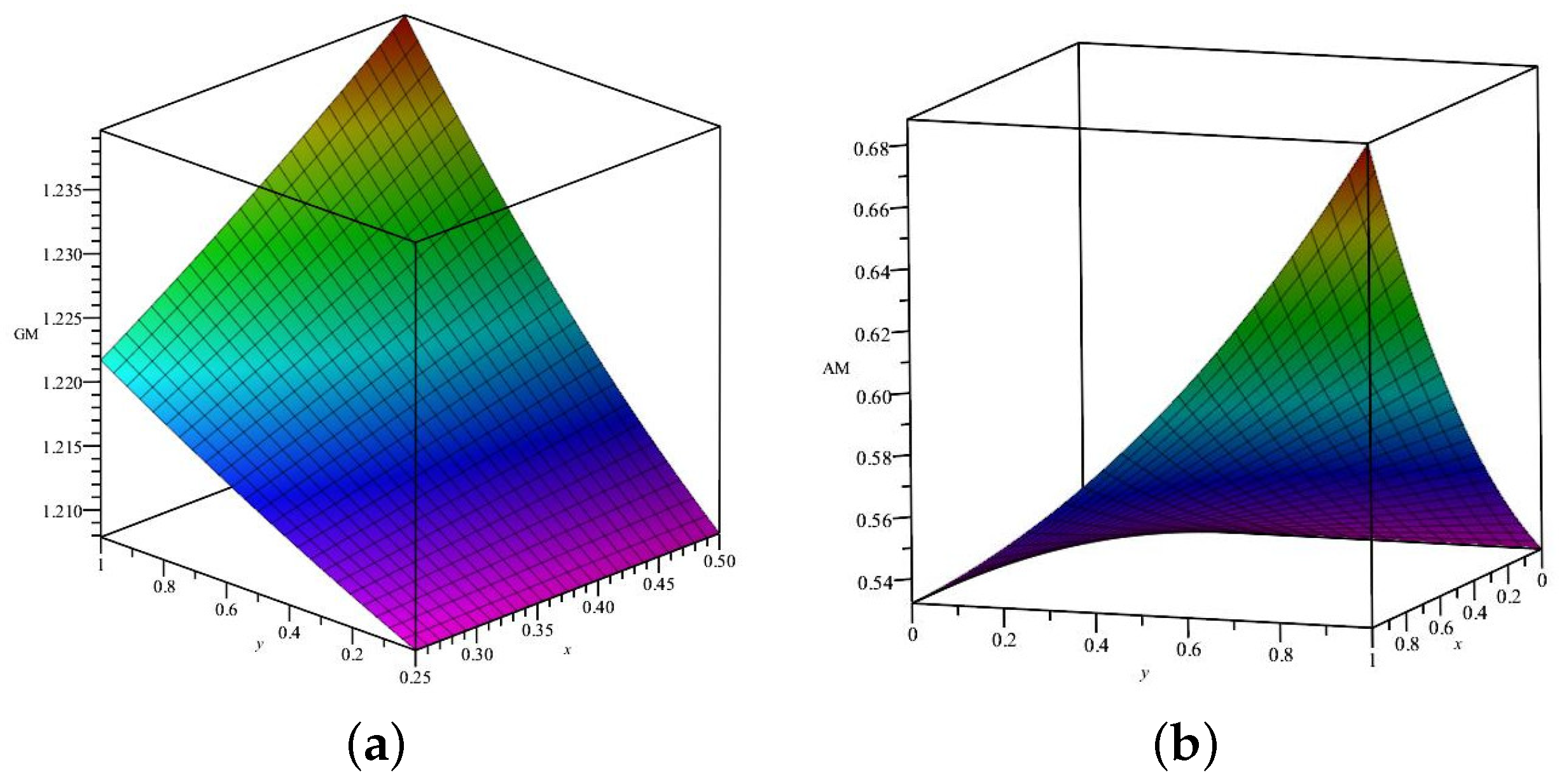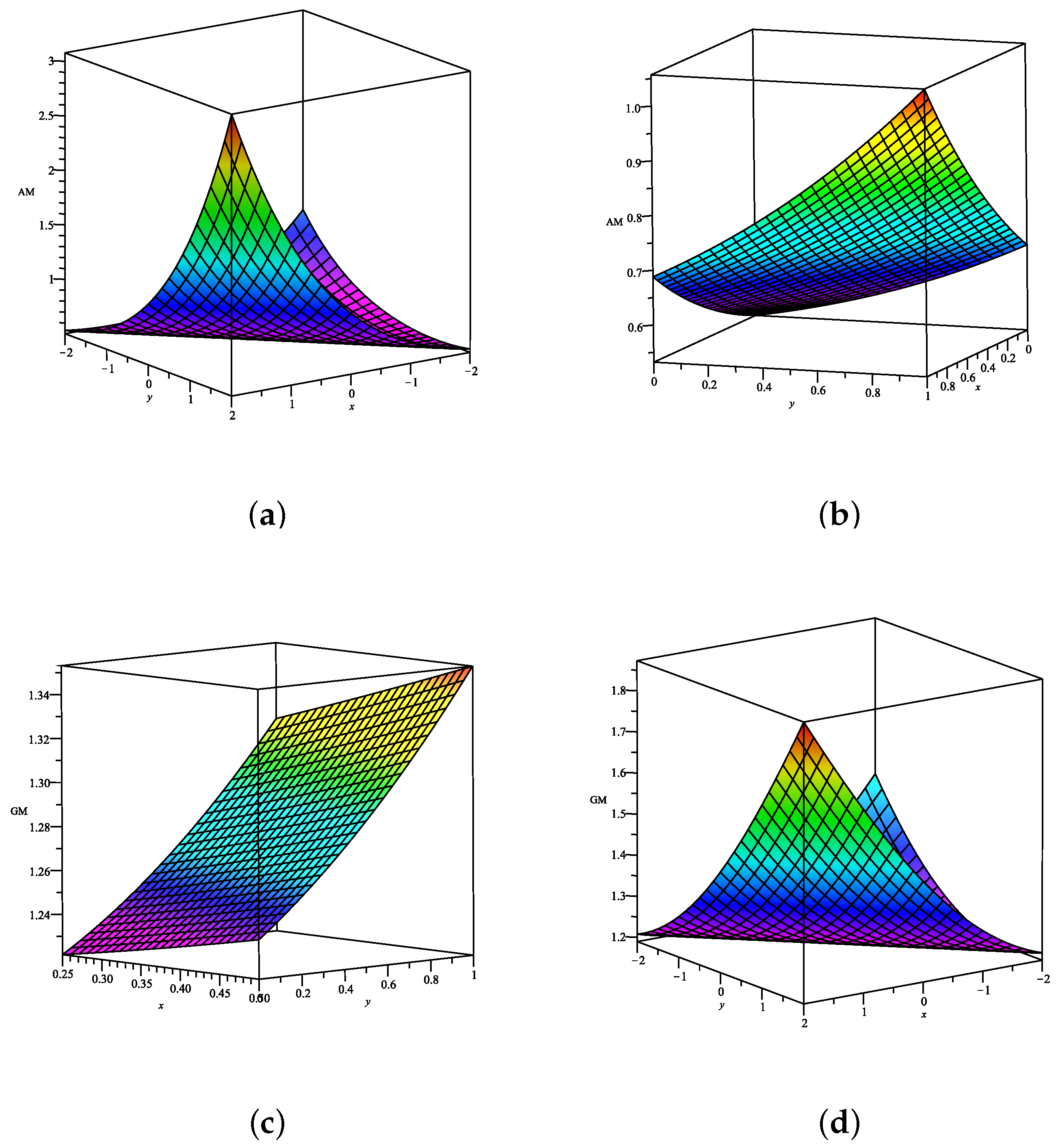Optimum Approximation for ς–Lie Homomorphisms and Jordan ς–Lie Homomorphisms in ς–Lie Algebras by Aggregation Control Functions
Abstract
:1. Introduction
- We present the definition of -LA and we introduce the matrix valued fuzzy normed space and the matrix valued fuzzy controllers.
- We apply Radu–Mihet method derived from the alternative fixed point theorem to study the H–U–R stability of homomorphisms and Jordan homomorphisms on -LMVFBA.
2. Preliminaries
- (i)
- Boundary conditions and , and .
- (ii)
- The function is monotonically non-decreasing in each component, i.e., for all ,hold for arbitrary n-tuples In case , for all .
- (1)
- The arithmetic mean function , defined by
- (2)
- The geometric mean function , defined by
- (3)
- For any , the projection function and the order statistic function associated with the kth argument, are respectively defined by , where is the kth lowest coordinate of x, that is, . The projections onto the first and the last coordinates are defined as . Similarly, the extreme order statistics and are respectively the minimum and maximum functionswhich will sometimes be written by means of the lattice operations ∧ and ∨, respectively, that is,
- (4)
- The median of an odd number of values is simply defined byFor an even number of values , the median is defined bythat are clearly aggregation functions in any domain .
- if and only if
- denotes that and ; for every .
- Define in where . Note that, and .
- (1)
- (neutral element);
- (2)
- (commutativity);
- (3)
- (associativity);
- (4)
- (monotonicity).
- (5)
- If for every and each sequences and converging to and we getwe conclude that the continuity of ⊛ on (CGTN).
- (i)
- Define , such that,then is CGTN (minimum CGTN). Now, we present a numerical example of minimum CGTN as,or
- (ii)
- Define , such that,then is CGTN (product CGTN). Now, we present a numerical example of product CGTN as,or
- (iii)
- Define , such that,then is CGTN (Lukasiewicz CGTN). Now, we present a numerical example of Lukasiewicz CGTN as,or
- It is a left as a continuous and increasing function.
- for any and .
- For MVFFs and , the relation “” defined as followsfor all and .
- (1)
- if and only if and ;
- (2)
- for all and with ;
- (3)
- for all and any ;
- (4)
- for any .
- (i)
- ;
- (ii)
- the sequence is convergent to a fixed point of Ξ;
- (iii)
- is the unique fixed point of Ξ in the set ;
- (iv)
- .
3. H–U–R Stability of Homomorphisms on -LBA
- The sequence converges to a fixed point such as .
- The unique element is in the set and is the unique fixed point , it meansOn the other hand, according to the definition of the function and according to Lemma (1) for the function , we have for all .
- There exists a such thatfor all , and
- (i)
- We put in and use Lemma 1 and conclude that is additive.
- (ii)
- By considering in the last equality, we obtain .
- (iii)
- By using Lemma 2, we infer that the mapping is -linear.
4. H–U–R Stability of Jordan Homomorphisms on -LBA
Author Contributions
Funding
Institutional Review Board Statement
Informed Consent Statement
Data Availability Statement
Acknowledgments
Conflicts of Interest
References
- Filippov, V.T. On n-Lie algebras. Sib. Mat. Zh. 1985, 26, 126–140. [Google Scholar] [CrossRef]
- Nambu, Y. Generalized Hamiltonian dynamics. Phys. Rev. D 1973, 7, 2405–2412. [Google Scholar] [CrossRef]
- Azcarraga, J.A.; Izquierdo, J.M. n-ary algebras: A review with applications. J. Phys. A 2010, 43, 1–117. [Google Scholar] [CrossRef] [Green Version]
- Bagger, J.; Lambert, N. Comments on multiple M2-branes. J. High Energy Phys. 2008, 2008, 105. [Google Scholar] [CrossRef]
- Filippov, V.T. On n-Lie algebras of Jacobians. Sib. Mat. Zh. 1998, 39, 660–669. [Google Scholar] [CrossRef]
- Ulam, S.M. Problems in Modern Mathematics, Chapter VI, Science ed.; Wiley: New York, NY, USA, 1964. [Google Scholar]
- Aoki, T. On the stability of the linear transformation in Banach spaces. J. Math. Soc. Jpn. 1950, 2, 64–66. [Google Scholar] [CrossRef]
- Rassias, T.M. On the stability of the linear mapping in Banach spaces. Proc. Am. Math. Soc. 1978, 72, 297–300. [Google Scholar] [CrossRef]
- Găvruţxax, P. A generalization of the Hyers-Ulam-Rassias stability of approximately additive mappings. J. Math. Anal. Appl. 1994, 184, 431–436. [Google Scholar] [CrossRef] [Green Version]
- Asgari, G.; Cho, Y.J.; Lee, Y.W.; Gordji, M.E. Fixed points and stability of functional equations in fuzzy ternary Banach algebras. J. Ineq. Appl. 2013, 2013, 166. [Google Scholar] [CrossRef] [Green Version]
- Hassani, F.; Ebadian, A.; Gordji, M.E.; Kenary, H.A. Nearly n-homomorphisms and n-derivations in fuzzy ternary Banach algebras. J. Ineq. Appl. 2013, 2013, 71. [Google Scholar] [CrossRef] [Green Version]
- Rassias, J.M.; Jun, K.W.; Kim, H.M. Approximate (m,n)-Cauchy Jensen Additive Mappings in C*-algebras. Acta Math. Sin. 2011, 27, 1907–1922. [Google Scholar] [CrossRef]
- Rassias, J.M.; Kim, H.M. Generalized Hyers-Ulam stability for general addiitve functional equations in quasi-β-normed spaces. J. Math. Anal. Appl. 2009, 356, 302–309. [Google Scholar] [CrossRef] [Green Version]
- Saxena, R.K. Certain properties of generalized Mittag-Leffler function. In Proceedings of the Third Annual Conference of the Society for Special Functions and Their Applications, Chennai, India, 4–6 March 2002; pp. 75–81. [Google Scholar]
- Mathai, A.M.; Saxena, R.K. The H-Function with Applications in Statistics and Other Disciplines; Halsted Press: Sidney, Australia; John Wiley & Sons: New York, NY, USA; London, UK, 1978; xii+192p, ISBN 0-470-26380-6. [Google Scholar]
- Kilbas, A.A.; Saigo, M. On the H-function. J. Appl. Math. Stoch. Anal. 1999, 12, 191–204. [Google Scholar] [CrossRef] [Green Version]
- Kiryakova, V. Some special functions related to fractional calculus and fractional (non-integer) order control systems and equations. Facta Univ. Ser. Autom. Control Robot. 2008, 7, 79–98. [Google Scholar]
- Eidinejad, Z.; Saadati, R. Hyers-Ulam-Rassias-Wright Stability for Fractional Oscillation Equation. Discret. Dyn. Nat. Soc. 2022, 2022, 2–3. [Google Scholar] [CrossRef]
- Grabisch, M.; Marichal, J.-L.; Mesiar, R.; Pap, E. Aggregation Functions; Encyclopedia of Mathematics and Its Applications, 127; Cambridge University Press: Cambridge, UK, 2009; xviii+460p, ISBN 978-0-521-51926-7. [Google Scholar]
- Klement, E.P.; Mesiar, R.; Pap, E. Triangular norms—Basic properties and representation theorems. In Discovering the World with Fuzzy Logic; Studies in Fuzziness and Soft Computing; Physica: Heidelberg, Germany, 2000; Volume 57, pp. 63–81. [Google Scholar]
- Younis, M.; Sretenovic, A.; Radenovic, S. Some critical remarks on “Some new fixed point results in rectangular metric spaces with an application to fractional-order functional differential equations”. Nonlinear Anal. Model. Control. 2022, 27, 163–178. [Google Scholar] [CrossRef]
- Mitrovic, Z.D.; Dey, L.K.; Radenovic, S. A fixed point theorem of Sehgal-Guseman in bv(s)-metric spaces. Ann. Univ. Craiova Ser. Math. Comput. Sci. 2020, 47, 244–251. [Google Scholar]
- Graily, E.; Vaezpour, S.M.; Saadati, R.; Cho, Y.J. Generalization of fixed point theorems in ordered metric spaces concerning generalized distance. Fixed Point Theory Appl. 2011, 30, 8. [Google Scholar] [CrossRef] [Green Version]
- Brzdek, J.; El-hady, E.; Schwaiger, J. Investigations on the Hyers-Ulam stability of generalized radical functional equations. Aequationes Math. 2020, 94, 575–593. [Google Scholar] [CrossRef] [Green Version]
- Brzdek, J.; Popa, D.; Rasa, I.; Xu, B. Ulam Stability of Operators; Mathematical Analysis and Its Applications; Academic Press: London, UK, 2018. [Google Scholar]
- Shakeri, S.; Ciric, L.J.B.; Saadati, R. Common fixed point theorem in partially ordered L-fuzzy metric spaces. Fixed Point Theory Appl. 2010, 125082. [Google Scholar] [CrossRef] [Green Version]
- Ciric, L.; Abbas, M.; Damjanovic, B.; Saadati, R. Common fuzzy fixed point theorems in ordered metric spaces. Math. Comput. Modelling 2011, 53, 1737–1741. [Google Scholar] [CrossRef]
- Cho, Y.J.; Saadati, R. Lattictic non-Archimedean random stability of ACQ functional equation. Adv. Differ. Equ. 2011, 31, 12. [Google Scholar] [CrossRef] [Green Version]
- Mihet, D.; Saadati, R.; Vaezpour, S.M. The stability of an additive functional equation in Menger probabilistic ϕ-normed spaces. Math. Slovaca 2011, 61, 817–826. [Google Scholar] [CrossRef] [Green Version]
- Cho, Y.J.; Park, C.; Rassias, T.M.; Saadati, R. Stability of Functional Equations in Banach Algebras; Springer: Cham, Switzerland, 2015. [Google Scholar]
- Brzdȩk, J.; Fošner, A. Remarks on the stability of Lie homomorphisms. J. Math. Anal. Appl. 2013, 400, 585–596. [Google Scholar] [CrossRef]
- Gordji, M.E.; Khodaei, H. A fixed point technique for investigating the stability of (α,β,γ)-derivations on Lie C*-algebras. Nonlinear Anal. 2013, 76, 52–57. [Google Scholar] [CrossRef]
- Diaz, J.B.; Margolis, B. A fixed point theorem of the alternative for contractions on a generalized complete metric space. Bull. Am. Math. Soc. 1968, 74, 305–309. [Google Scholar] [CrossRef] [Green Version]
- Hyers, D.H.; Isac, G.; Rassias, T.M. Stability of Functional Equations in Several Variables; Birkhäuser: Boston, MA, USA, 1998. [Google Scholar]
- Jung, S.M. Hyers-Ulam-Rassias Stability of Functional Equations in Nonlinear Analysis; Springer Science: New York, NY, USA, 2011. [Google Scholar]
- Kannappan, P. Functional Equations and Inequalities with Applications; Springer Science: New York, NY, USA, 2009. [Google Scholar]
- Lu, G.; Xie, J.; Liu, Q.; Yuanfeng, J. Hyers-Ulam stability of derivations in fuzzy Banach space. J. Nonlinear Sci. Appl. 2016, 9, 5970–5979. [Google Scholar] [CrossRef] [Green Version]
- Pansuwan, A.; Sintunavarat, W.; Choi, J.Y.; Cho, Y.J. Ulam-Hyers stability, well-posedness and limit shadowing property of the fixed point problems in M-metric spaces. J. Nonlinear Sci. Appl. 2016, 9, 4489–4499. [Google Scholar] [CrossRef] [Green Version]
- Park, C.; Kim, S.O.; Alaca, C. Stability of additive-quadratic ρ-functional equations in Banach spaces: A fixed point approach. J. Nonlinear Sci. Appl. 2017, 10, 1252–1262. [Google Scholar] [CrossRef] [Green Version]
- Rassias, T.M. Functional Equations, Inequalities and Applications; Kluwer Academic: Dordrecht, The Netherlands, 2003. [Google Scholar]
- Sahoo, P.K.; Kannappan, P. Introduction to Functional Equations; CRC Press: Boca Raton, FL, USA, 2011. [Google Scholar]
- Shen, Y. An integrating factor approach to the Hyers-Ulam stability of a class of exact differential equations of second order. J. Nonlinear Sci. Appl. 2016, 9, 2520–2526. [Google Scholar] [CrossRef] [Green Version]
- Zhou, M.; Liu, X.-L.; Cho, Y.J.; Damjanovic, B. Ulam-Hyers stability, well-posedness and limit shadowing property of the fixed point problems for some contractive mappings in Ms-metric spaces. J. Nonlinear Sci. Appl. 2017, 10, 2296–2308. [Google Scholar] [CrossRef] [Green Version]
- Eidinejad, Z.; Saadati, R.; de la Sen, M. Radu-Mihet Method for the Existence, Uniqueness, and Approximation of the ψ-Hilfer Fractional Equations by Matrix-Valued Fuzzy Controllers. Axioms 2021, 10, 63. [Google Scholar] [CrossRef]


Publisher’s Note: MDPI stays neutral with regard to jurisdictional claims in published maps and institutional affiliations. |
© 2022 by the authors. Licensee MDPI, Basel, Switzerland. This article is an open access article distributed under the terms and conditions of the Creative Commons Attribution (CC BY) license (https://creativecommons.org/licenses/by/4.0/).
Share and Cite
Eidinejad, Z.; Saadati, R.; Mesiar, R. Optimum Approximation for ς–Lie Homomorphisms and Jordan ς–Lie Homomorphisms in ς–Lie Algebras by Aggregation Control Functions. Mathematics 2022, 10, 1704. https://doi.org/10.3390/math10101704
Eidinejad Z, Saadati R, Mesiar R. Optimum Approximation for ς–Lie Homomorphisms and Jordan ς–Lie Homomorphisms in ς–Lie Algebras by Aggregation Control Functions. Mathematics. 2022; 10(10):1704. https://doi.org/10.3390/math10101704
Chicago/Turabian StyleEidinejad, Zahra, Reza Saadati, and Radko Mesiar. 2022. "Optimum Approximation for ς–Lie Homomorphisms and Jordan ς–Lie Homomorphisms in ς–Lie Algebras by Aggregation Control Functions" Mathematics 10, no. 10: 1704. https://doi.org/10.3390/math10101704







